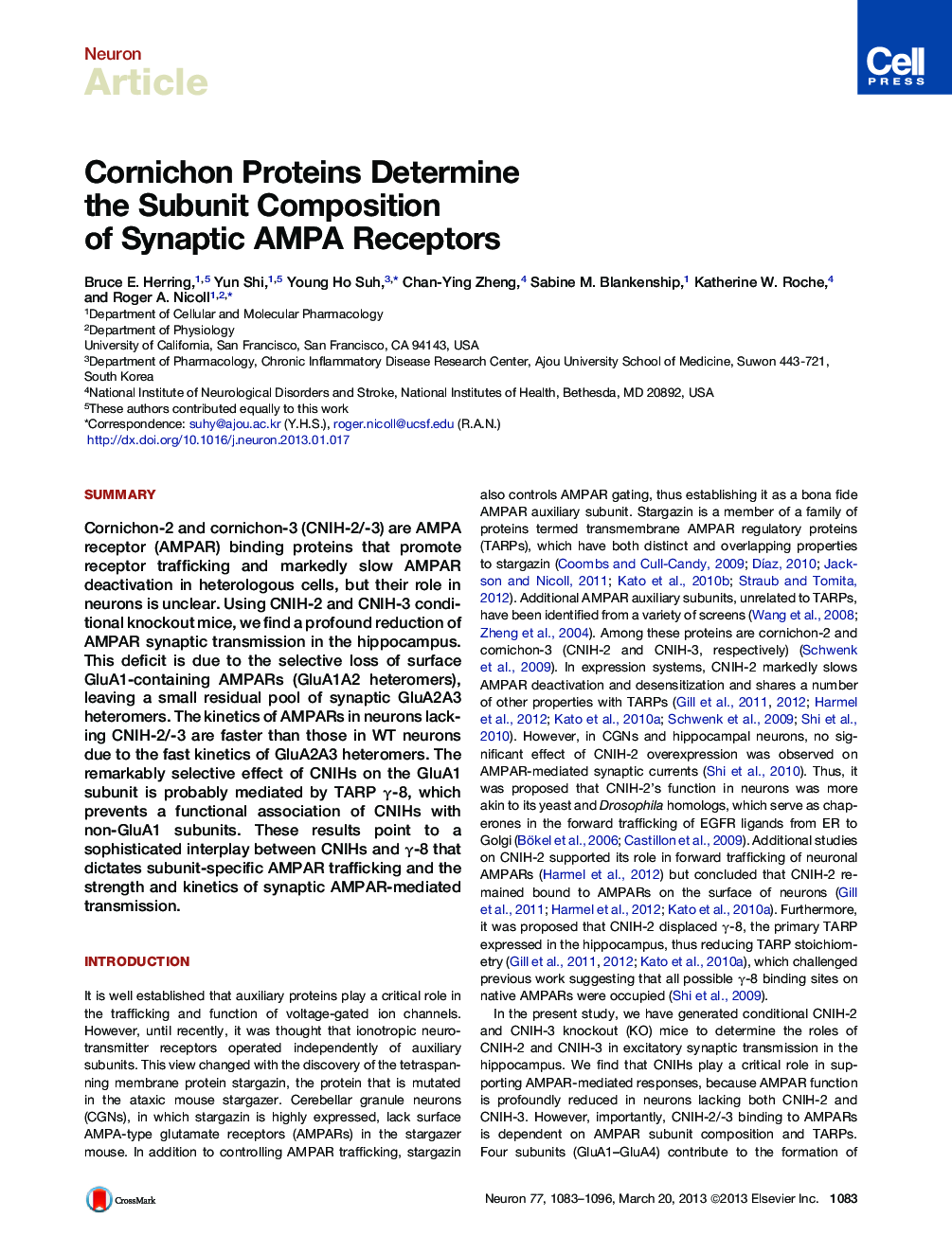| Article ID | Journal | Published Year | Pages | File Type |
|---|---|---|---|---|
| 4321536 | Neuron | 2013 | 14 Pages |
SummaryCornichon-2 and cornichon-3 (CNIH-2/-3) are AMPA receptor (AMPAR) binding proteins that promote receptor trafficking and markedly slow AMPAR deactivation in heterologous cells, but their role in neurons is unclear. Using CNIH-2 and CNIH-3 conditional knockout mice, we find a profound reduction of AMPAR synaptic transmission in the hippocampus. This deficit is due to the selective loss of surface GluA1-containing AMPARs (GluA1A2 heteromers), leaving a small residual pool of synaptic GluA2A3 heteromers. The kinetics of AMPARs in neurons lacking CNIH-2/-3 are faster than those in WT neurons due to the fast kinetics of GluA2A3 heteromers. The remarkably selective effect of CNIHs on the GluA1 subunit is probably mediated by TARP γ-8, which prevents a functional association of CNIHs with non-GluA1 subunits. These results point to a sophisticated interplay between CNIHs and γ-8 that dictates subunit-specific AMPAR trafficking and the strength and kinetics of synaptic AMPAR-mediated transmission.
► Cornichons are required for synaptic expression of GluA1-containing AMPA receptors ► Cornichons are required for GluA1-containing AMPA receptor trafficking ► TARP γ-8 prevents a functional association of cornichons with non-GluA1 subunits
